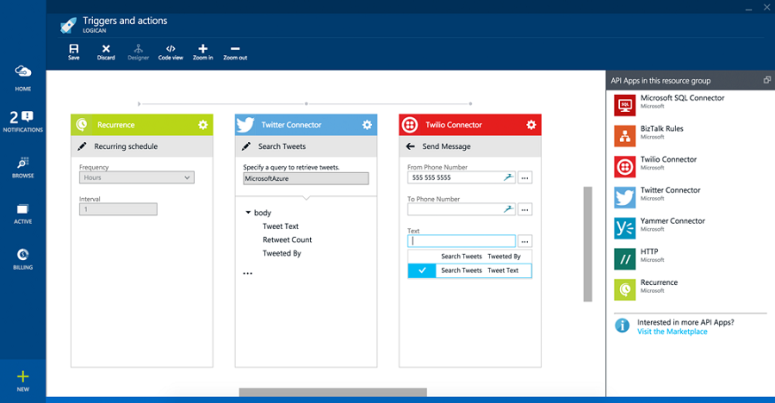Microsoft Azure is one of the leading cloud platforms that enables us to build a scalable and highly performing web applications. In this article, I will list the available options that allow you to quickly understand what you need in order to build your application and what services to use in each layer.
What do we need to build a web application?
Each web application needs some services in order to work propably. For example, a web server, a database server, queuing system etc..
In the past few years, I have found many people using Azure wrong or inefficiently. Some used virtual machines while they should have used Web Apps, others used a huge size of a virtual machine because they didn’t know they could scale their VM without losing the data. Accordingly, I will do my best to give you a summery of Azure services that you can utilize to build your next fantastic Web App.
Application Life-cycle Management
So, first things first. You need a place to store your use cases, test cases, source code, run unit tests and perform a continuous integration and deployment.
Although it may not be a part from Azure, but Team Services integrates seamlessly with Azure and many Azure Services like Web Apps, Mobile Apps, Azure Functions … support continuous integration with Azure.
Team Services help you to have a central repository for your source code, documents and requirement. It also supports Visual Studio Team Services and Git as a source control. It is free and supports unlimited number of projects with 5 free users.
Hosting
Now, you developed your web application, tested it and it is time to host it. Azure supports hosting for .Net, Java, PHP, NodeJS, and Python built applications.
In this phase you have more than one option:
- Virtual Machine: This is the very basic option and should not be used unless you have no other way, ex: migrating a legacy application that cannot work with a PAAS offering, in this case you simply have a virtual machine in the cloud and you can remotely connect to it, install the needed software and deploy your application. Note that this is the most expensive solution.
- Cloud Services: This is the same as Virtual Machine except that it offloads some of the work to be done by you such as setting up software and windows updates. It has 2 types, a web role which is setup to host a web application directly, and a worker role which enables you to host an executable application such as a windows service or a console app. The good part about cloud services is that you provide it with a package that has your code and it manages the deployment of the application. If the virtual machine hosting the app went down, Azure will automatically creates another virtual machine and deploy the code to it.
- App Service: This is the Platform as a Service or PAAS offering from Azure, all you have to worry about here is your code. It gives you a vitrual directory on cloud and all you have to do is to deploy your App to it either through web deploy, FTP or upload a package. It also offers continous integration and monitoring capabilities. This is the most flexible and cheapest option and you can autoscalre it according to the CPU usage, RAM usage and other factors. So basically, you can start small and scale as you need later. Azure App Service has Web Apps to host your application, Mobile App which is a backend as a service to your mobile apps, Logic Apps which gives you the option to build your businss logic and integration between different systems, and finally API Apps which is used to host your REST api web Apps.
Integration
If your application integrates with other systems, then you can use Azure Logic App, Azure Functions, BizTalk Service and Service Bus
Most services gives you a very nice visual designer that allows you to orchestrate your business logic and it offers out of the box seamless integration with many external systems such Office 365, Dynamic CRM or On-premise system through BizTalk Services
Data Storage
Azure offers many services to store your data, all of it are based on Azure Storage Account which is the main storage system for all services in Azure. Each account has some storage and throughput limitation, you can check these limitation from here
- If you need to store text files or video files, you can use Page and Block blobs. Each type is suitable for specific file types, you can read more about it from here
- Use Azure Media Services if you have to store and stream media files.
- Azure table storage is suitable if you need a NoSQL database, it provides a high throughput storing and retrieving entities that have no referential integrity between them.
- Azure DocumentDB is a NoSQL document database similar to MongoDB, it is a born in the cloud database that you can use if you need a low latency high performing database
- Azure SQL Database is a SQL Server database in the cloud where you need not to worry about SQL Server installation, Backup and Restore or anything else, you just create a database and use it.
- Azure File Share is used to replace any legacy File System Share in any legacy application.
Now, you should be able to have some basic knowledge about the features you can use to build your next web application.


